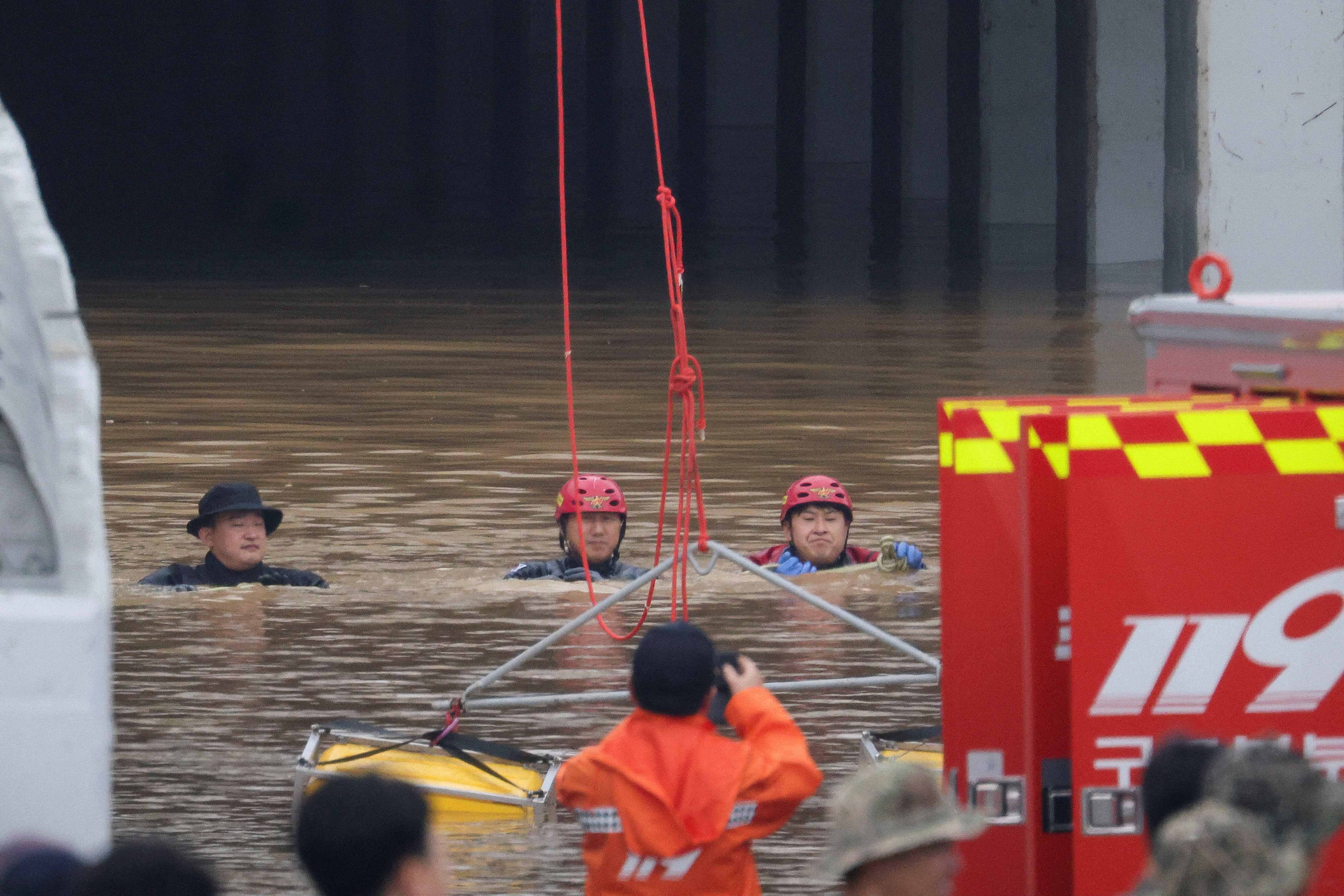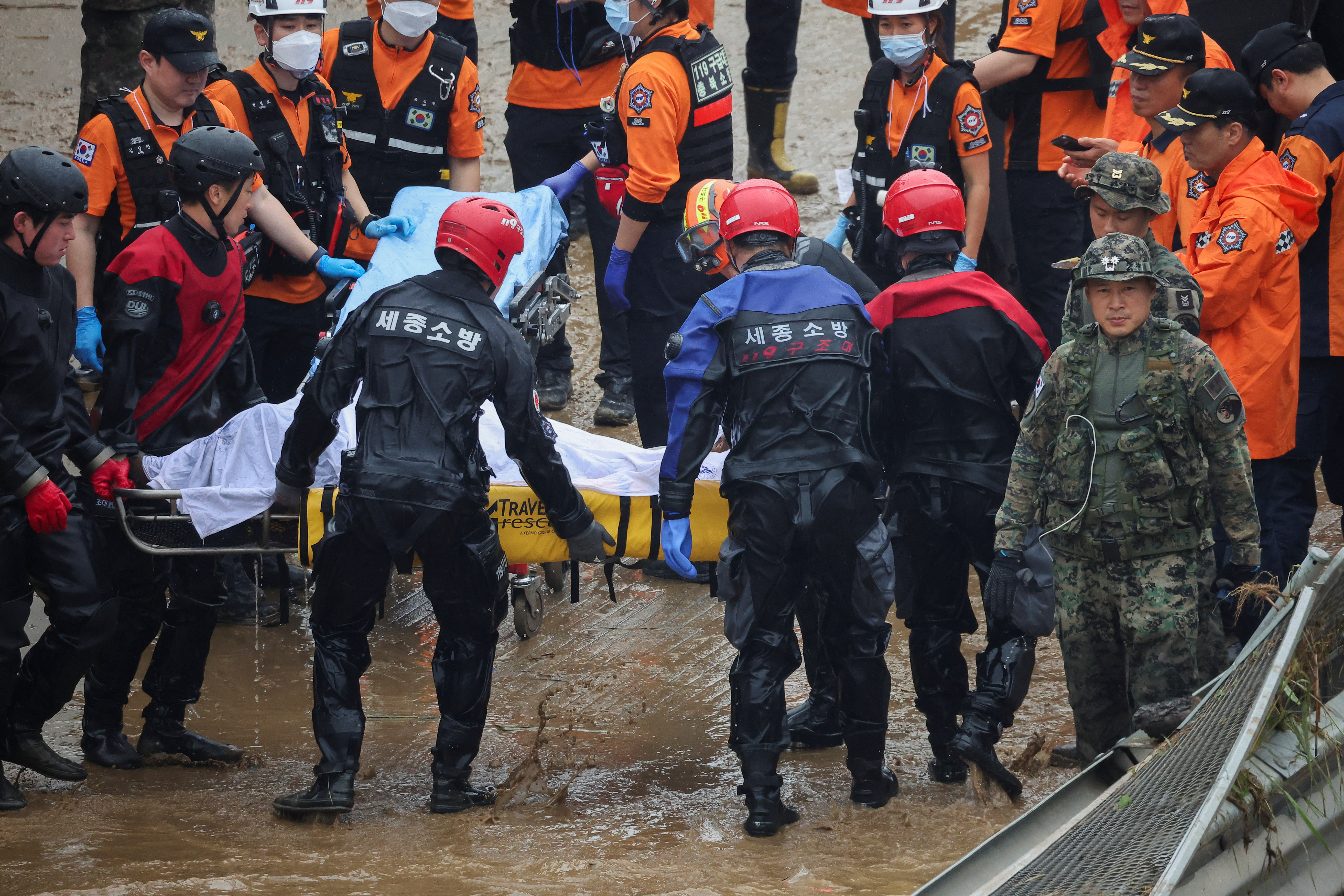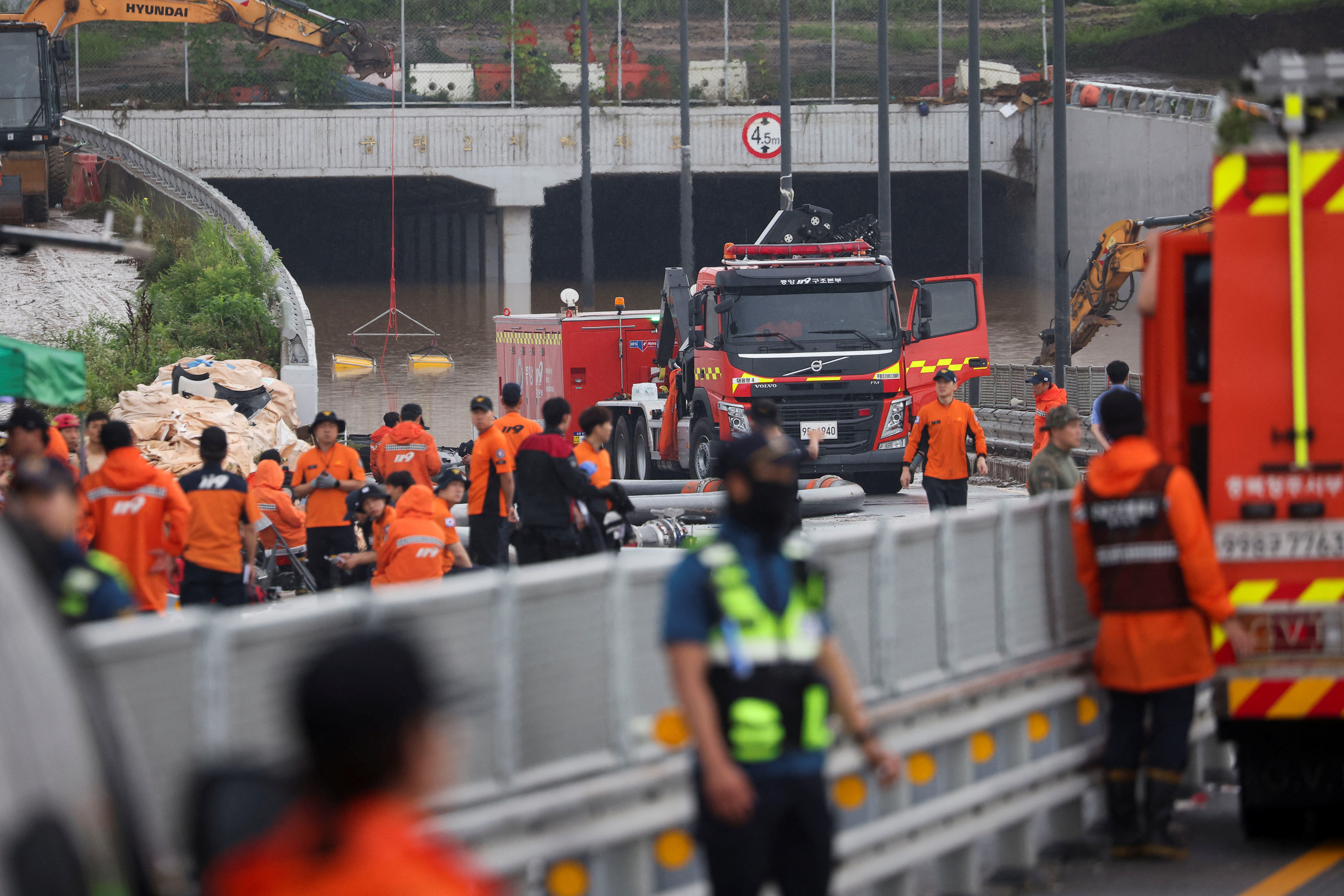
Rescue workers in South Korea have recovered seven bodies from a bus trapped in a flooded underground tunnel, according to media reports, as days of torrential rains caused widespread flooding, landslides and the overflow of a big dam.
Officials in the central town of Osong told the Yonhap news agency on Sunday that rescue workers recovered six more bodies from the 685-metre-long (2,247 feet) tunnel as they scrambled to reach several people who remained trapped.
Nearly 400 rescue workers, including divers, were searching the tunnel in the central city of Cheongju, where the vehicles, including a bus, were swamped by a flash flood on Saturday evening, Seo Jeong-il, chief of the city’s fire department, said in a briefing.
Photos and video from the scene showed rescue workers establishing a perimeter and pumping brown water out of the tunnel as divers used rubber boats to move in and out of the area.

The four-lane underpass became inundated when the banks of the nearby Miho River collapsed following three days of heavy rain.
The deluge swept through the tunnel too quickly for people to escape, according to media reports. Fire officials estimated that the tunnel filled with water in as little as two or three minutes.
Officials said rescue workers recovered one body from the tunnel on Saturday and saved nine people who survived by clinging to the sides of the guard rails around the tunnel, according to the Korea Herald newspaper.
There were 15 vehicles, including the bus and 12 cars, trapped in the tunnel and a total of 11 people had been reported missing on Saturday.
“There were many cars inside the tunnel when the water began coming in and it rose very rapidly,” one of the nine survivors told Yonhap on Saturday.
“I don’t understand why the tunnel wasn’t closed earlier.”

South Korea, which is at the peak of its summer monsoon season, has been pounded by heavy rains since July 9.
The Ministry of Interior and Safety said late on Saturday that landslides and flooding triggered by the downpours killed 26 people on Saturday and Friday. The deaths were all reported in the country’s central and southeastern regions.
The majority of the casualties – including 17 dead – were from North Gyeongsang province, where nine others remain missing, largely due to huge landslides in the mountainous area that engulfed houses with people inside.
In the most severely affected areas, “entire houses were swept away whole”, one emergency responder told Yonhap.
The ministry said the rainfall had forced about 5,570 people to evacuate. The figure included thousands ordered to flee their homes after the Goesan Dam in North Chungcheong province began overflowing on Saturday morning, submerging low-lying villages nearby.
More than 4,200 people remained in temporary shelters as of Saturday night, it said.
The downpours have disrupted travel across the country, forcing the cancellation of some 20 flights and the suspension of its regular train service and some bullet trains, the ministry said.
Nearly 200 roads remained closed, it added.
President Yoon Suk-yeol, who was visiting Ukraine on Saturday, asked Prime Minister Han Duck-soo to mobilise all available resources to respond to the disaster, according to his office.
The prime minister urged officials to preempt river overflows as well as landslides and requested support for rescue operations from the defence ministry.
The Korea Meteorological Administration, meanwhile, issued heavy rain warnings, saying more rain was forecast through to Wednesday next week and that the weather conditions posed a “grave” danger.
South Korea is regularly hit by flooding during the summer monsoon period but the country is typically well-prepared and the death toll is usually relatively low.
It endured record-breaking rains and flooding last year, which killed at least 11 people. They included three people trapped in a Seoul semi-basement apartment of the kind that became internationally known because of the Oscar-winning Korean film Parasite.
The South Korean government said at the time the 2022 flooding was the heaviest rainfall since Seoul’s weather records began 115 years ago and blamed climate change for the extreme weather.







